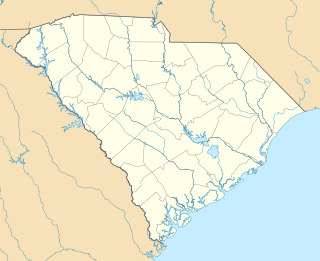 W
WCharles Towne Landing State Historic Site in the West Ashley area of Charleston, South Carolina preserves the original site of the first permanent English settlement in Carolina. Originally opened in 1970 to commemorate South Carolina's tricentennial, this 664-acre (269 ha) site is home to an exhibit hall, rental facility, a natural habitat zoo, ongoing archeological excavations, miles of trails, dozens of picnic tables, a replica tall ship, six fireable replica cannon, and much more.
 W
WThe Chauga Mound (38OC1) is an archaeological site once located on the northern bank of the Tugaloo River 1,200 feet (370 m) north of the mouth of the Chauga River in Oconee County, South Carolina in the Lake Hartwell Basin. The mound is now inundated by Lake Hartwell. The mound and village portion of the site was built by peoples of the South Appalachian Mississippian culture
 W
WColonial Dorchester State Historic Site sits along the Ashley River, near the town of Summerville in Dorchester County, South Carolina. In 1969, the site was donated to the South Carolina State Park Service and was added to the National Register of Historic Places on December 2, 1969. Currently the site of a 325-acre park, Old Dorchester State Park offers visitors a glimpse into South Carolina's Colonial past. The park boasts one of the most well-preserved oyster-shell tabby forts in the country, St. George's Bell Tower, log shipping wharves, burial sites and cemeteries, as well as on-going archaeological digs that are still unearthing the settlement's history.
 W
WThe conservation-restoration of the H.L. Hunley is currently being undertaken by the Warren Lasch Conservation Center; they hope to have the Hunley project completed by 2020. Since the Hunley was located in 1995 and recovered from the ocean in 2000, a team of conservators from the Lasch Conservation Center has been working to restore the Hunley.
 W
WFort Sumter is a sea fort in Charleston, South Carolina, notable for two battles, the first of which began the American Civil War. It was one of a number of special forts planned after the War of 1812, combining high walls and heavy masonry, and classified as Third System, as a grade of structural integrity. Work started in 1829, but was incomplete by 1861, when the Civil war began.
 W
WUSS Housatonic was a screw sloop-of-war of the United States Navy, gaining its namesake from the Housatonic River of New England.
 W
WH. L. Hunley, often referred to as Hunley or, erroneously, as CSS Hunley, was a submarine of the Confederate States of America that played a small part in the American Civil War. Hunley demonstrated the advantages and the dangers of undersea warfare. She was the first combat submarine to sink a warship (USS Housatonic), although Hunley was not completely submerged and, following her successful attack, was lost along with her crew before she could return to base. The Confederacy lost 21 crewmen in three sinkings of Hunley during her short career. She was named for her inventor, Horace Lawson Hunley, shortly after she was taken into government service under the control of the Confederate States Army at Charleston, South Carolina.